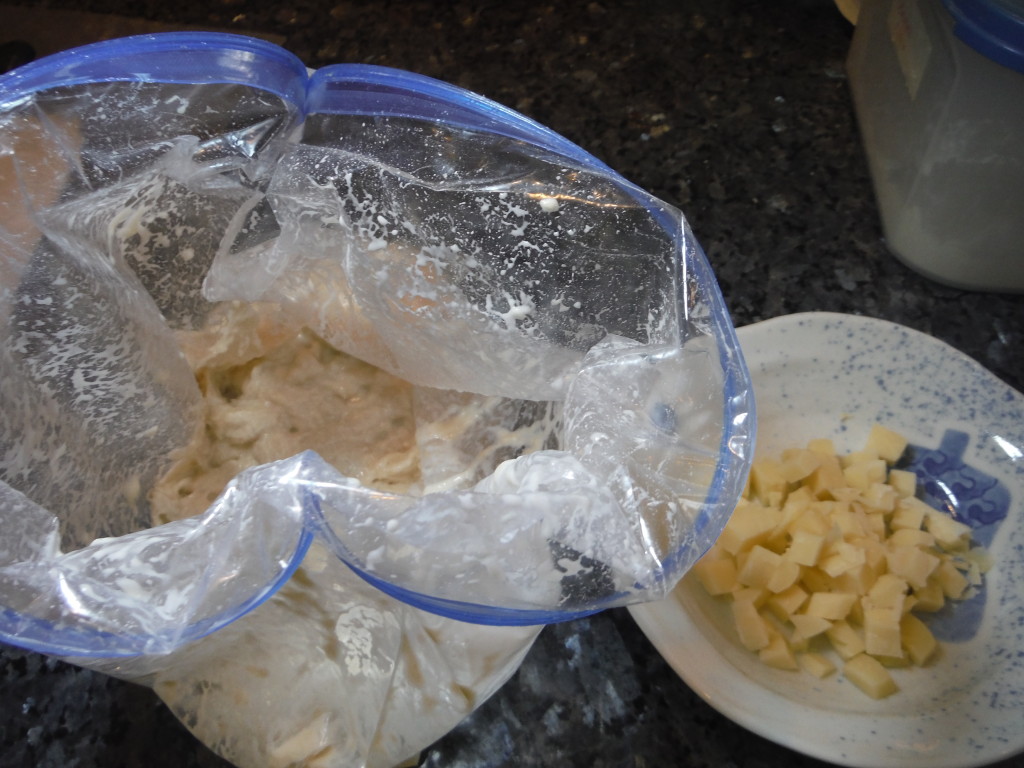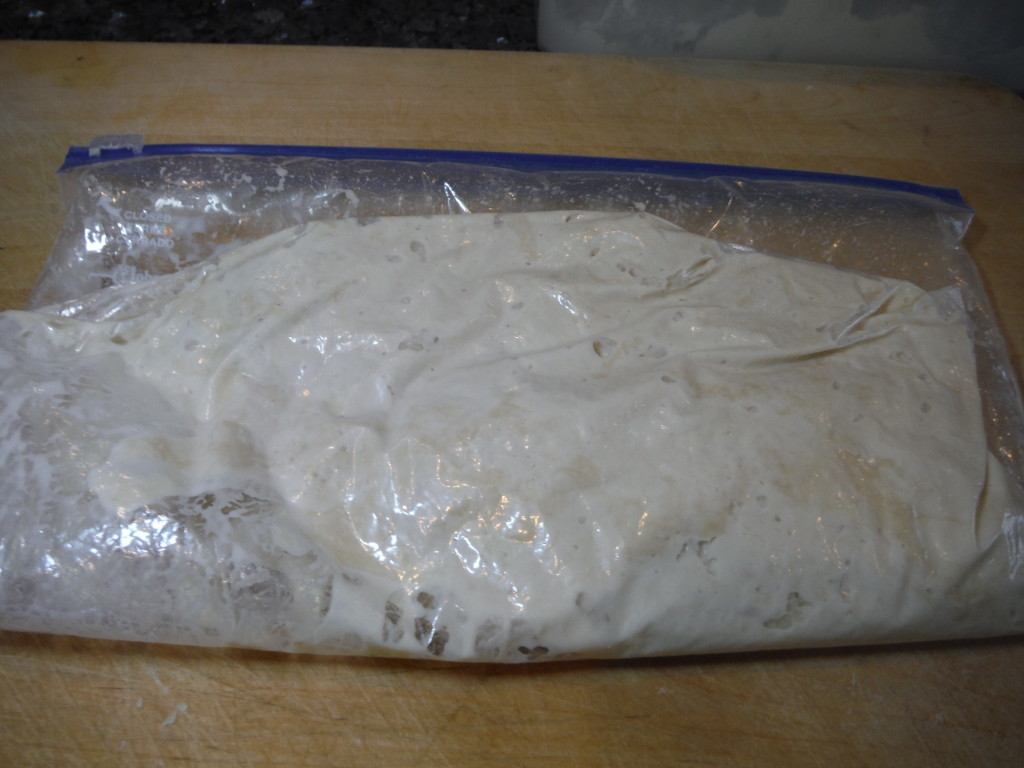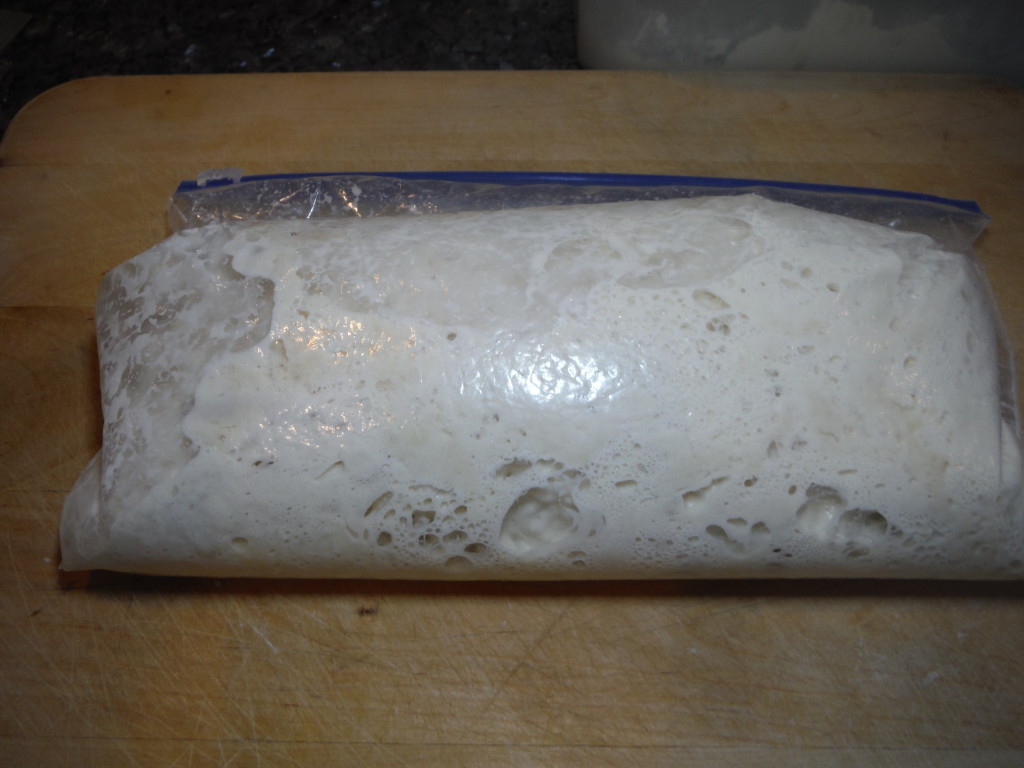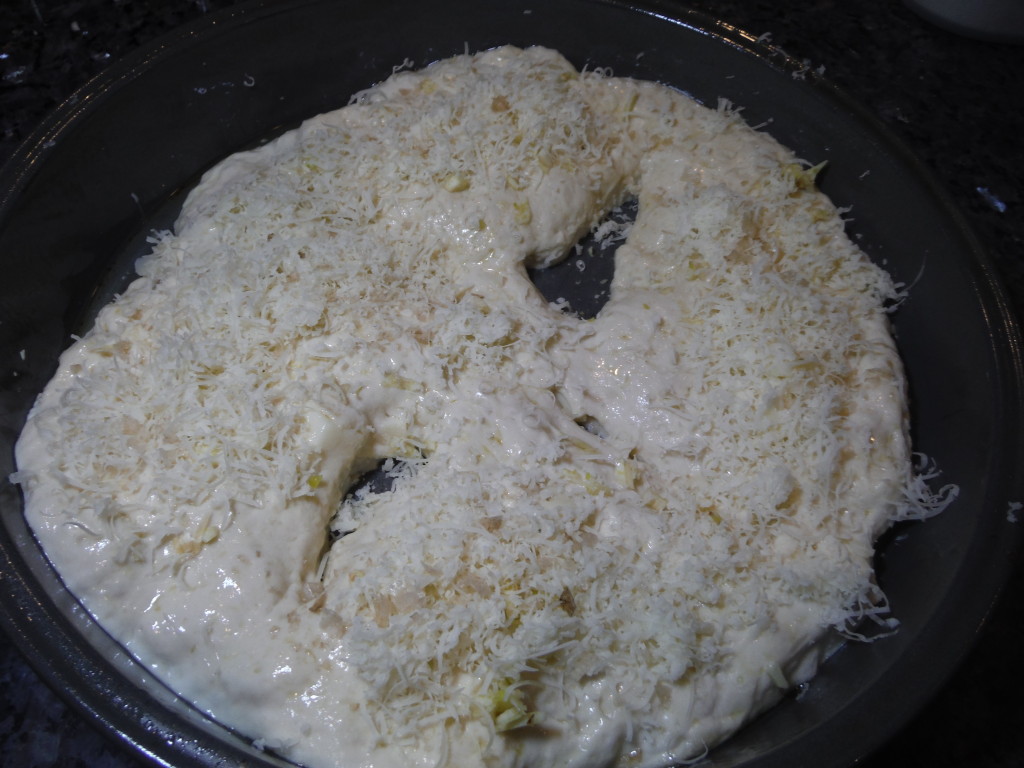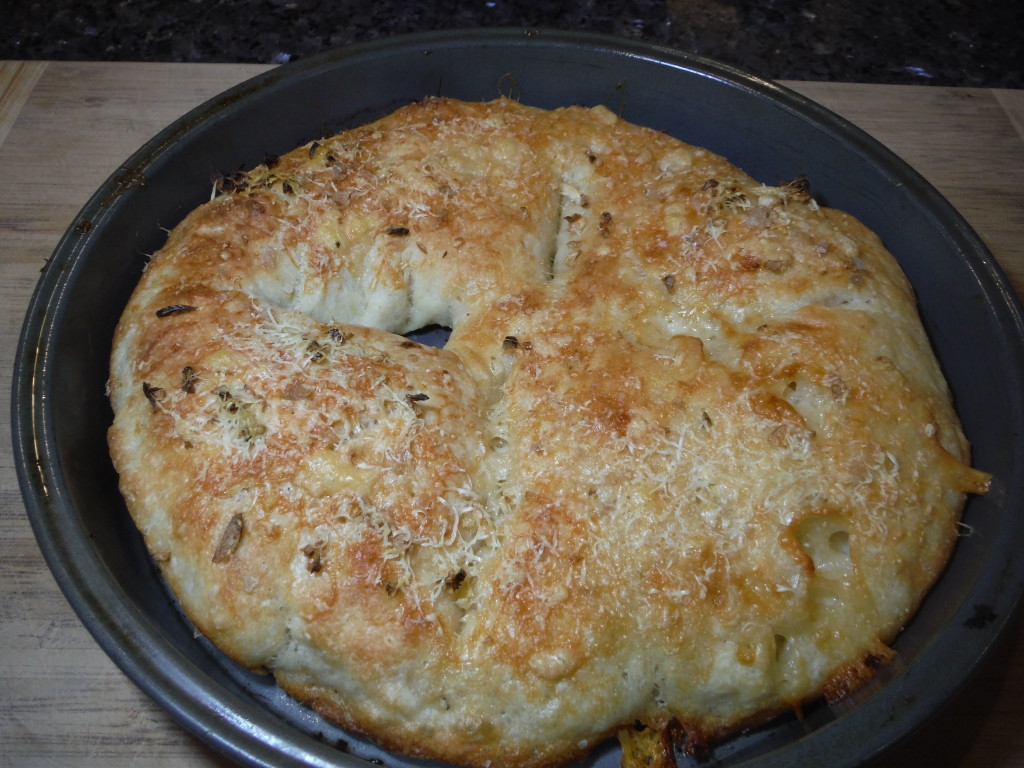A few years ago, Carol and I spent 4 days at the baking school at King Arthur Flour in Norwich, VT. The best thing we made there, Fougassa al Asiago Formaggio, has become a family favorite. Here is a post on it: Fougassa al Asiago
I have been thinking that a fougassa would be good on a camping trip, and I set out to modify the recipe so that it could be baked in a Dutch oven. I made two basic adaptations: First, I cut the recipe in half so that it would fit into a cake pan inside the Dutch oven. Second, I worked with baggies to minimize the amount of contact with the dough, since clean hands are a problem on campouts. Here is the result which yields 4 good servings.
Note that if you are going to bake in a cardboard box oven, you could double all the quantities and make a bigger batch. In that case, bake on a cookie sheet rather than a cake pan. Also, you should bake at a slightly lower temperature and for a longer period to ensure that there is no scorching of the cardboard box oven, since the usual temperature for baking this bread (450 degrees) is close to the temperature at which paper will burn (451 degrees per the famous Ray Bradbury novel.)
Sandwich Baggie (Preferment)
2 oz. (1/2 cup) King Arthur All Purpose Flour (this is a relatively high protein all purpose flour)
Large pinch of dry yeast
Gallon Baggie (Dough)
6.5 oz. (1-5/8 cups) KFA All Purpose Flour
¾ tsp. salt
3/8 tsp. yeast
Sandwich Baggie No. 2
1 oz. semi-hard cheese cut into little cubes. Original recipe was Asiago. Last batch was made with Gruyere.
Sandwich Baggie No. 3
½ oz. semi-hard cheese grated
Sandwich Baggie No. 4
1 clove garlic
½ tsp. coarse salt (Maldon flakes are good)
Cooking spray
Olive oil
Cake pan
Aluminum foil
Dutch oven
At home make up all the baggies.
In camp, the night before add ¼ cup of water to Sandwich Baggie No. 1 (the preferment). Remove as much air as possible from the baggie, and then massage the baggie from the outside until the ingredients are well combined into a batter. Place the baggie someplace out of the way so that it can ferment overnight.
At lunchtime or mid-afternoon on the next day (depending on the temperature), add the preferment to the main ingredients in the gallon baggie, and add ½ cup of water. Remove as much air as possible from the baggie, and then massage the baggie until the ingredients are well combined into a smooth dough.
Mix in the cheese cubes from Sandwich Baggie No. 2, and massage some more until they are well distributed. Place the baggie someplace out of the way so that it can ferment for a couple of hours until doubled. Here is the dough when just mixed:
How long this will take will depend on the weather. On a hot day you should start later in the afternoon (1 hour before baking should be enough) and on a cold day all afternoon may be necessary to get it to double. Here is the dough after doubling:
Start the charcoal. This bread is baked at a relatively high temperature, 450 degrees, so you will need more coals that usual, about 22 on the lid and 11 underneath.
Make aluminum foil ropes for the bottom of the Dutch oven, so that the cake pan will be off the bottom of the oven and the top and bottom of the bread will cook more evenly.
Clean your hands. Peel and chop the garlic. Spray the cake pan with the cooking spray. Dump the dough from the gallon baggie into the pay, and pour about 1 Tbs. of olive oil on top of the dough. Put your hand in the oil, and with the oiled hand spread the dough until it covers the cake pan. Try to make cuts in the dough so that it will have more surfaces to crisp up when baking. (The dough did not cooperate, so the cuts were not at all uniform.) Sprinkle the top of the dough with the chopped garlic, the gated cheese from Sandwich Baggie No. 3, and the coarse salt.
Put the cake pan in the Dutch oven on top of the aluminum foil ropes, add the lit charcoal to the top and bottom, and bake for 15-20 minutes until the bread is cooked and golden. Remove the cake pan from the Dutch oven.
Allow the bread to cool for 5 minutes before cutting into 8 pieces to serve.



